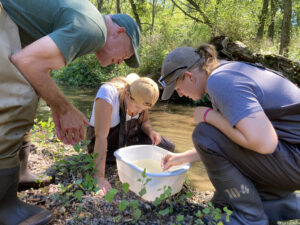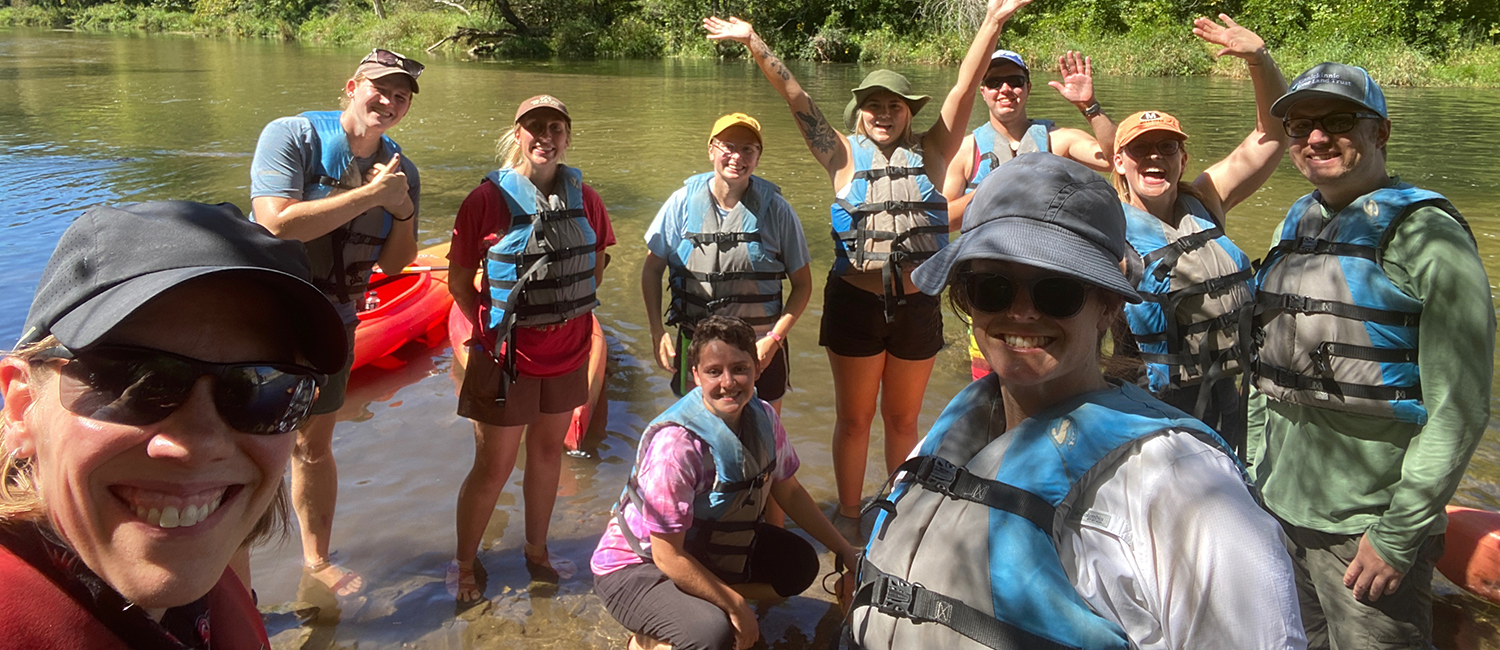When the City of River Falls needed qualified people to provide ecological monitoring for their dam removal projects, UW-River Falls faculty and students stepped in to fulfill this community need.
Thanks to a grant from the Freshwater Collaborative of Wisconsin, Zach Blackert, Environmental Geography major at UW-Eau Claire, was one of six students selected for the Dam Analysis and Monitoring Crew. The DAM Crew is a cooperative effort involving UW-River Falls, the Kiap-TU-Wish Chapter of Trout Unlimited, the Kinni Corridor Collaborative and Inter-Fluve. Read more at Dam Removal Project Opens Flow of Community-based Training and Research.

Here’s what they said about their experience.
Why did you choose to participate in this field experience?
Last spring I took an intro to geomorphology course, and my professor recommended the dam project. Then my mentor suggested it would be a good opportunity for someone interested in geomorphology and river work. I especially liked it being related to environmental restoration and conservation.
What did you learn?
The field experience that we had during class was mostly identifying landscapes and being able to interpret them. We didn’t do much of the data collection like we did with the Freshwater Collaborative project. It was interesting to take the concepts that I learned in the classroom and apply them to the real world.
Working with Sean Morrison at Inter-Fluve, we learned the ways that he or someone in his position would collect the data and how to understand the stream in a specific way. We got a holistic idea of what the river looks like at different stretches and then we learned how to blend that with all the stakeholders involved. My biggest takeaway was that you can do the science, but it’s really important to understand why you are doing the science. That was really groundbreaking for me.
Was there anything that surprised you?
It was surprising how invested in science the community was. Almost every day we were collecting data and we’d run into someone walking a dog or kayaking who would ask what we were doing, and we would tell them about the project. I’ve never been somewhere where people are so into the science.
What was the most challenging aspect?
Consistency. We developed the collection method together. We had the same understanding of what to do but each had a different way to do it. We had to communicate better and rely on each other as a team to present what we found. It’s not like any one person became an expert on all the data. You were a web of people who together had a holistic understanding of the data we collected.
What was the benefit to interacting with students and faculty from a different university and with working professionals?
I love Eau Claire, but there’s something interesting about going to a different program entirely. I met a lot of people with interesting majors and interests. It was a great networking opportunity.
I was the only one who doesn’t live in River Falls and had never been there. We spent a whole day learning the history of the river and being presented with all the previous data. I had a good understanding of what was going on with the river, and I felt like I could have those conversations with community members and other stakeholders about what’s going on.
It was really helpful to have conversations with someone like Sean who’s in a field I’m interested in. I could ask him about what he did at his job and what things he wished he’d focused on in college. It was interesting to see how things work and what employers are looking for. It was kind of like having a professional mentor in a sense.
What kind of career do you hope to go into after graduation? How will this experience help you attain your career goals?
I feel a lot more prepared to enter the workforce. Before I was on the fence about what I wanted to do. This cemented that I want to work with rivers and environmental restoration. It’s great to do the work and meet people — to see that this work matters and it’s worth doing. I got to really see how important the science is to the entire city and the entire watershed. It’s not just doing the science but helping the communities the science is connected to.

